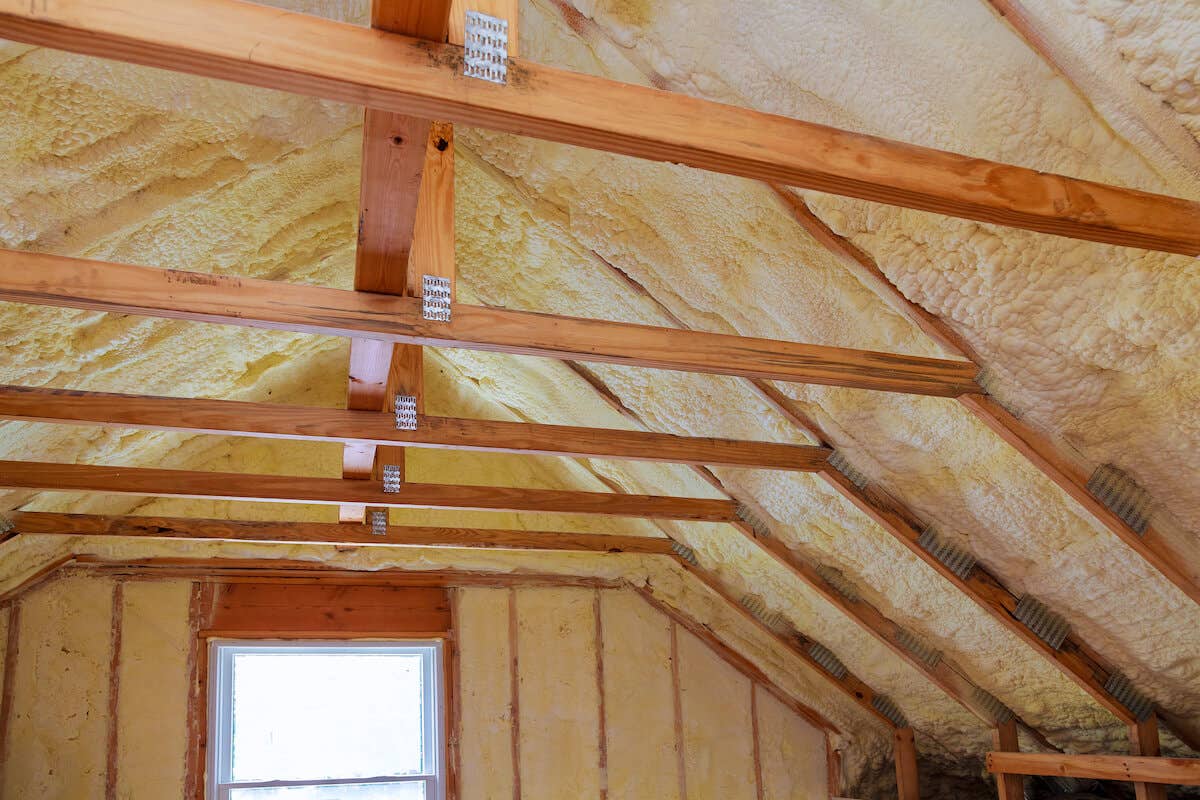Air leaks in your home don’t just leave you with an uncomfortable draft. They lead to higher energy consumption and a bigger carbon footprint. Finding air leaks in the house enables you to close them up and make your heating and cooling systems more efficient.
But these leaks aren’t always obvious. In fact, they can be surprisingly sneaky and nearly invisible to the naked eye. Leaks usually come through cracks and openings in your doors and windows, but even your electrical outlets and floorboards could be sources of excessive air leaking.
So how can you get rid of them? In this guide, we’ll explore some of the most common sources of air leakage and discuss how to find air leaks in a house.
Why it’s important to fix air leaks
Did you know that air leaks inside your home could result in you using up to 30% more energy? This not only translates to higher utility bills, but air leaking also means your HVAC system is working harder to maintain a comfortable temperature. The harder it works, the more likely your systems will eventually experience maintenance problems and potentially reduce the overall lifespan of the system.
Knowing how to find where cold air is coming in not only allows you to maintain your HVAC system and a comfortable temperature — it can also improve the air quality in your home, keeping you and your family safe.
Common sources of air leakage
The key to knowing how to detect air leaks in houses is knowing where to look. Here are some of the areas you should check first to find air leaks in a house:
- Attic hatch
- Piping
- Wires
- Plumbing vents
- The tops of your basement’s walls
- Chimneys
- Recessed lighting
- Windows
- Doors
- Ductwork
- Baseboards
- Garages
We hate to break it to you, but this is only a short list of where those leaks might be coming from. You could patch up one air leak and not realize there are five others in the same area! That’s why calling in a professional is best — they’re trained in how to find air leaks in houses.
How to find air leaks in your house: 6 Ways
Figuring out how to check for air leaks in houses might feel overwhelming, but there are a few methods you can try that may help you find leaks so you can air seal your home.
Visual inspection
Weatherstripping and caulking eventually wear away, and it’s considered good practice to check your existing insulation visually. Take a look at the areas outside and inside your home for any cracks or gaps. You can also place your hand next to any suspected areas to detect a temperature change or airflow.
Note: Visual inspections may help you find some leaks, but this method isn’t always reliable. You’d be surprised how many leaks aren’t visible to the eye.
Building pressurization test
If a visual inspection doesn’t turn up any leaks, try conducting a building pressurization test. First, you’ll need to wait for a windy day. Once you get one, you can follow these steps:
- Turn off any combustible appliances, heaters, water heaters, and furnaces.
- Close all the doors, windows, and any fireplace flues.
- Turn on the exhaust fans inside your house. (You can also use a large window fan to remove the air from your home.)
- Light an incense stick and move it toward suspected areas.
If the smoke is sucked out or blown into the room, you’ve found your leak.
Note: You can do this at home without the help of a professional, but it’s important to proceed carefully.
Air leak detectors
Air leak detectors are used to — you guessed it! — detect air leaks. The most common type of detector is the smoke pencil air leak detector. These detectors will produce smoke so that you can easily see where the air is going. Similar to the pressurization test, you've found a leak if the air is blown into the room or sucked out.
Note: If you have the budget, consider investing in an ultrasonic air leak detector. An ultrasonic air leak detector uses ultrasound waves to identify leaks. These are among the most accurate home leak detectors available.
The flashlight method
The flashlight method is designed to catch larger leaks in windows and doors. Grab a flashlight (or use your smartphone) and wait until it’s dark outside. Turn out the lights in your home and shine a flashlight anywhere you think there might be a gap or a crack. Ask someone to stand on the other side. If they can see any rays of light coming through, you’ve found your leak.
Note: The downside to the flashlight method is it’s only effective for larger cracks. However, as rudimentary as this method is, it’s still a highly effective way of finding sources of air leakage.
Dirty attic insulation
Attics are one of the most common culprits when it comes to air leaks. They can also hurt the air quality of your home because attics are regularly filled with dust. This type of leak is typically a bit easier to diagnose — it’s hard to ignore dusty air flying around the home.
Performing this test is essentially the same as doing a visual inspection. Check to see if your attic insulation has darkened, caused by dusty air coming in through cracks in your attic. You might even notice frosty areas on your insulation if warm air has come into contact with cold air in your attic. Not only is this one of the best tips for how to find cold air leaks in houses, but it may also help you prevent mold.
Note: In the winter, you’ll often find “frosty” areas in your attic because the warm air from downstairs is condensing and freezing when it reaches the cold air in your attic.
Blower door test
Professionals often use the blower door test. During this process, they seal an entire property and blow a depressurization fan through it. It’s typically installed within the doorway, creating a low-pressure wave indoors. This forces air through any leaks and cracks.
Note: Ordering a professional blower door test is one of the best ways to find those hidden areas that need to be insulated. While there are DIY methods, calling in experts is often your best choice..
Protect your home with Kin Insurance
Air leaks can do real damage to a home’s heating and cooling systems, and HVAC repairs can put a major dent in your bank account. Worse? Your home insurance usually only covers the damage if it’s caused by a covered peril.
We understand how difficult it can be to harden your home against outdoor elements. That’s one reason we provide all sorts of home maintenance tips. But remember, you also need to protect your home with an insurance policy you can trust. Whether you need hurricane home insurance or simply want a comfortable and energy-efficient home, we’ve got you covered.
To learn more about the policies we provide and how we’re helping people save on homeowners insurance in Florida, contact Kin Insurance today.


